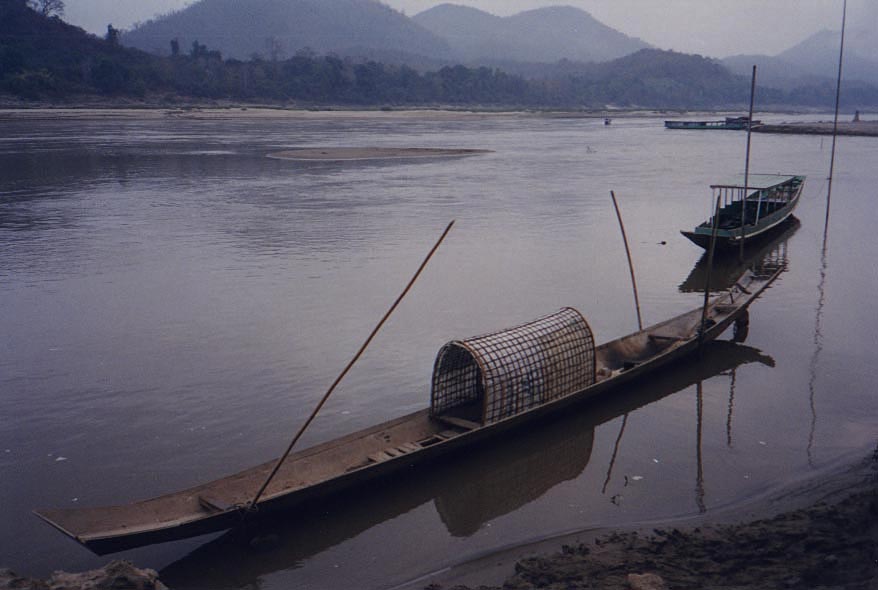
What about the surrounding town?
Boats tie up informally.
There are many temples close to the river. At several times of day, monks beat immense drums.
The French added precisely surveyed streets—this one parallel to the Mekong but set back one block.
Straight as can be.
The Nam Khan parallels the Mekong before joining it, thus creating a peninsula occupied by a third of Louang Prabang. This is the circumscribed part of the city where efforts to retain a traditional or colonial flavor are most likely to succeed.
Xiengthong Road is little altered since the French left.
The former French customs house, at the tip of the peninsula and here under renovation.
Colonial houses also survive on the peninsula.
The question is whether to get rid of buildings like this or save them in the name of heritage and tourist dollars.
A more recent building with Deco elements.
Another example of European design.
A hotel tries to fit in.
Another view.
The colonial hospital is still in use as such.
Another view.
A bank.
Across from the hospital, the colonial Talat Dala market is still busy.
Inside, bricks of kip are changed.
The market may be traditional, but tastes are changing.
Signs of modernization are everywhere, including not only store-bought clothing but satellite dishes.
Still farther out, a landscape fully in keeping with the pursuit of economic growth.